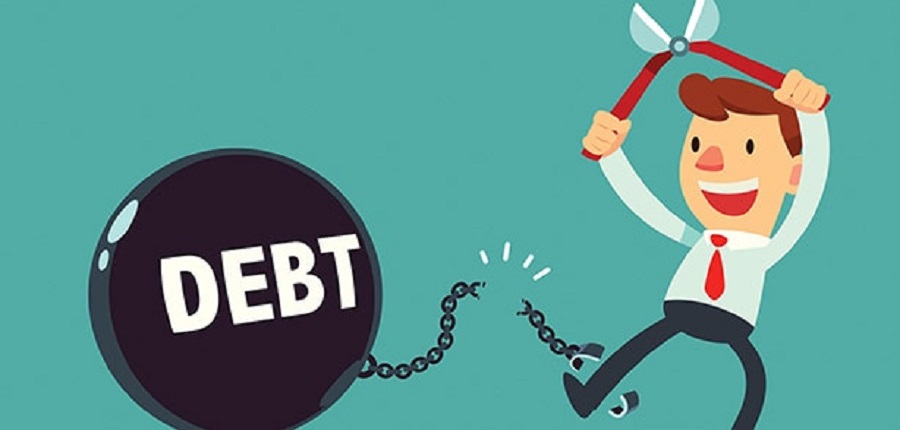This article is focused on giving insight to the key concepts around debt and how to get out of it.

Being stuck in a debt trap is a bad place to be. A debt trap happens when you borrow and repay but do not repay enough to pay down the interest portion of the loan, so the loan traps you in perpetual repayments.
Debt is simply front-loaded consumption. When you borrow, you are spending future cash flow today,
with the intention of repaying those cashflows in future with returns to be made today. Where the proceeds of debt can be utilized and invested to yield a return larger than the actual sum borrowed, then that debt is usually classified as good debt. However, where the proceeds of the debt do not generate cash flows to repay the debt, then that debt is bad debt.Thus, debt can be good and bad, the difference being if the economic life of the proceeds of the debt is longer in tenor than the loan itself that created the debt. However good or bad, debt is a drag on profitability.
READ: How interest rates impact your wallet
Many borrowers fall into a debt trap because they borrow and life happened and they cannot repay, but there is also a lack of knowledge element in play and this article is focused on giving insight to the key concepts around debt, namely.
- FICO/Credit Scores
- APR
- Negative Compounding
FICO/Credit Scores: A credit score is a numerical expression of how reliable a borrower is. A credit score tells lenders how creditworthy a potential borrower is. Credit scores track payment history and numbers of inquiries to mention a few and are used to determine not only if a loan is granted but at what interest rate. A borrower with a higher credit score means the borrower is more creditworthy. A lower credit score thus will mean a higher APR to the borrower.
APR is the Annual Percentage Rate of a loan. It is the rate of interest charged to borrow funds. APR is expressed as a percentage and captures all the fees and additional charges on the loan, thus providing a complete cost of a loan. When you borrow money ask the lender about the APR, not just the interest rate.
READ: 7 Ways to pay for your higher education
Negative Compounding is simply compounding but in reverse. Imagine you earned 10% on an investment of N10,000.0 that’s N1,000 every year. Okay, assuming you owe an investment that charged you a fee of 10% annually irrespective of returns, this means even if you make no return you still owe N1,000 a year. That N1,000 in fees is added to your original principal, so next year you are paying 10% on N11,000. This is negative amortization, where the fees are added back to your original principal.
A debt trap is usually when a borrower with a low FICO credit score applies and obtains a loan, that loan is at a higher APR which puts considerable pressure to make payments monthly, if that borrower misses any payment, a higher penalty APR and fees is charged. This increases the monthly repayment, creates a negative amortization for that compounding period and traps the borrower in a cycle of simply meeting minimum payments unable to break out and paydown the principal borrowed.
How do you get out of a debt trap? If you are owing numerous creditors, is there a method to break out and avoid fees? Yes, there is, there are two methods, the Snowball, and the Avalanche method,
Let us take, for example, John who has three credit cards as follows.
- N1,000 credit balance with 10% APR
- N2,000 credit balance with 20% APR
- N3,000 credit balance with 30% APR
The snowball method focusses on paying down the debt with the lowest amount first, to score quick wins and reduce the number of open debt positions. The advantage of this strategy is it produces quick results, the disadvantage is the lowest debt may not be the more expensive by APR.
In our example with John, using the snowball method, John will pay his minimum balance on all cards, then make an extra payment to the card with the lowest amount i.e., the N1,000.00 card. Once that card is paid, he focuses on the N2,000 card.
In the Avalanche method, the focus is paying the loan with highest APR to reduce the overall cost of carrying debt. The advantage of this is that the borrower saves money, the disadvantage is that it takes longer to close out positions.
Using same example above, John will pay minimum on all cards then focus on paying down the N3,000 card first.
So, in summary when faced with mounting debt, this is the process.
- Organize your debt. Gather all information, amount, and APR.
- Decide what strategy to use, Avalanche or Snowball?.
- Call the creditors, ask for deals on early or bulk payments.
- Create a budget and reduce spending.
Remember, in personal finance, a guaranteed way to make a positive return on your portfolio is to pay down your debt. Makes no sense to invest and earn 10% when you have debt costing you 10%.





No comments :
Post a Comment